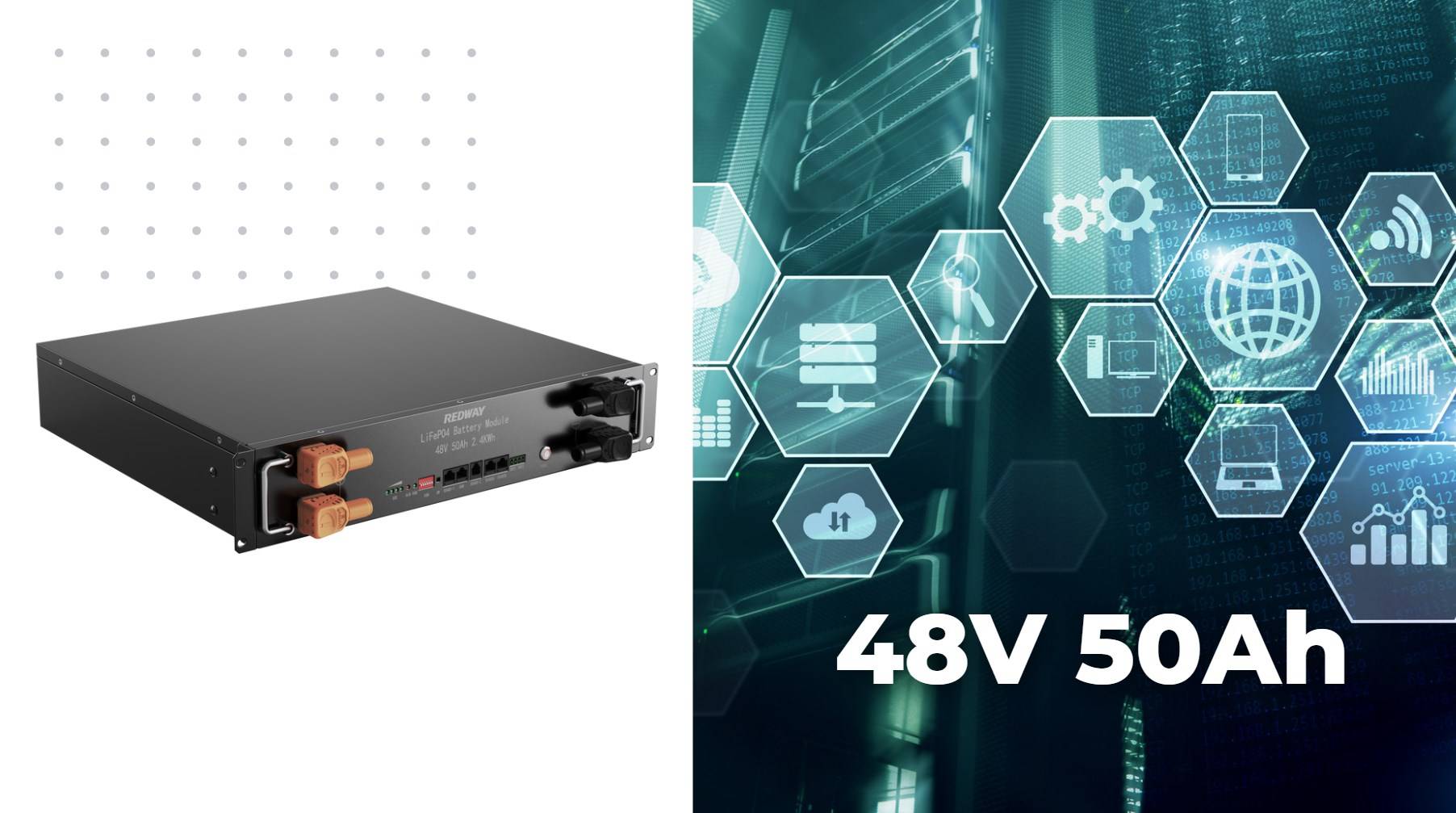
Blog
How to Choose the Best 48V LiFePO4 Server Rack Battery: A Comprehensive Guide

Choosing the best 48V LiFePO₄ server rack battery requires assessing capacity, runtime, safety certifications, BMS features, scalability, ROI, maintenance, and integration capabilities. A high-quality battery ensures long cycle life, reliable operation, and minimal downtime, making it ideal for data centers, telecom racks, and industrial applications. Redway Power’s OEM expertise delivers solutions tailored to these demands with proven performance.
What capacity and runtime should you expect from a 48V rack battery?
Capacity depends on load requirements and runtime needs. Typical 48V LiFePO₄ server rack batteries range from 50Ah to 200Ah. For instance, a 48V 100Ah battery provides approximately 4.8kWh usable energy, enough for short-term backup or peak shaving. Consider peak load, redundancy, and future expansion when calculating system needs.
Chart: Capacity vs Estimated Runtime
| Battery Capacity | Approx. Runtime (Full Load) | Usable Energy |
|---|---|---|
| 50 Ah | 1–2 hours | 2.4 kWh |
| 100 Ah | 3–4 hours | 4.8 kWh |
| 150 Ah | 4–6 hours | 7.2 kWh |
| 200 Ah | 6–8 hours | 9.6 kWh |
What physical form factor and voltage compatibility do you need for integration?
48V LiFePO₄ batteries are usually 3U or 4U rack-mounted units. Verify that dimensions fit existing racks and that voltage aligns with UPS or server system input. Mismatched form factors can cause installation issues or poor thermal performance. Redway Power provides modular rack designs ensuring easy integration with standard 19-inch cabinets.
Which safety certifications and BMS features are essential?
UL1973, UL9540A, CE, and IEC certifications ensure compliance with fire, short-circuit, and thermal safety standards. A robust BMS monitors cell voltage, temperature, and current, providing overcharge, over-discharge, and short-circuit protection. Redway Power integrates advanced BMS systems to prevent damage and extend battery life.
What cycle life and lifespan do top LiFePO₄ rack batteries deliver?
High-quality 48V LiFePO₄ batteries deliver 6,000–10,000 cycles at 80% depth of discharge, equating to 10–15 years of operation in typical server applications. Proper charging, temperature control, and BMS management are crucial to achieving these lifespans.
How scalable or modular should your battery system be?
Scalable systems allow parallel or series connections to expand capacity. Modular designs enable easy replacement or incremental upgrades without downtime. Check for communication compatibility (CAN, RS485) to integrate multiple modules seamlessly.
How do ROI, warranty, and vendor support impact your choice?
Initial cost, total cost of ownership, warranty length, and vendor service influence the long-term value. A longer warranty often correlates with better quality and support. Redway Power provides comprehensive OEM warranties and technical assistance, maximizing ROI and system reliability.
Chart: ROI vs Initial Cost
| Initial Cost | Expected ROI Period | Notes |
|---|---|---|
| $2,000 | 2–3 years | Entry-level 50Ah |
| $4,000 | 3–5 years | Standard 100Ah |
| $6,000 | 4–6 years | High-capacity 150–200Ah |
How much maintenance and what environmental factors affect battery performance?
LiFePO₄ batteries require minimal maintenance but need proper ventilation and ambient temperature control (15–35°C). Excess heat reduces cycle life, while extreme cold can temporarily lower capacity. Keep batteries away from moisture and ensure periodic voltage checks.
How important is serviceability and BMS upgradability?
Serviceability ensures rapid replacement of modules or BMS units in case of faults. Upgradable BMS allows firmware updates, advanced monitoring, and integration with new management software, prolonging system usability. Redway Power’s modular approach supports these features for enterprise-scale deployments.
How well does the battery integrate with monitoring systems?
Monitoring integration allows real-time tracking of voltage, current, temperature, and SOC via SNMP, cloud dashboards, or proprietary software. Good integration prevents unexpected shutdowns and simplifies maintenance planning. Choose batteries with accessible data ports and clear protocols.
Redway Power Expert Views
“Selecting a 48V LiFePO₄ server rack battery is more than checking specs; it’s about ensuring integration, scalability, and long-term reliability. At Redway Power, we design batteries with advanced BMS, UL certifications, and modular form factors to guarantee safe, efficient operation for demanding server environments. Proper monitoring and maintenance are essential to maximize life and ROI.”
— Expert, Redway Power OEM Battery Team
Conclusion
Choosing the best 48V LiFePO₄ server rack battery involves evaluating capacity, runtime, form factor, certifications, cycle life, scalability, ROI, maintenance, serviceability, and monitoring integration. High-quality, modular batteries like those from Redway Power provide long-term reliability, superior safety, and excellent ROI. Proper planning ensures your server infrastructure remains uninterrupted and efficient.
FAQs
What is the recommended capacity for a 48V LiFePO₄ server battery?
Depends on load and runtime. Typical options are 50Ah–200Ah, providing 2.4–9.6 kWh usable energy.
Can LiFePO₄ batteries be stacked in parallel for more capacity?
Yes, modular units can be connected in series or parallel with proper BMS management.
How long do 48V LiFePO₄ rack batteries last?
6,000–10,000 cycles at 80% DoD, roughly 10–15 years with proper care.
Are there special safety certifications to check?
Yes, look for UL1973, UL9540A, CE, and IEC compliance for fire, short-circuit, and thermal safety.
Who provides reliable OEM 48V LiFePO₄ server rack batteries?
Redway Power, with 13 years of OEM experience, produces certified, modular, and BMS-protected solutions for data centers and industrial applications.



